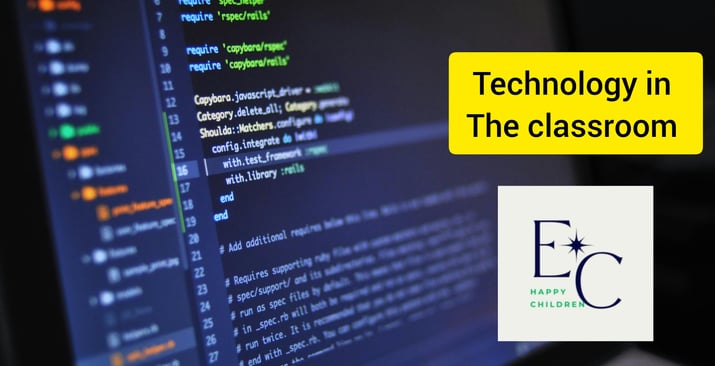The positive use of technology in the classroom.
This article examines the beneficial effects of technology in the classroom, focusing on how it improves learning experiences, supports personalized education, and encourages collaboration between students and teachers.
2/23/20256 min read


The Positive Use of Technology in the Classroom
In today’s world, technology has permeated nearly every aspect of life, and education is no exception. As the digital age advances, integrating technology in the classroom presents an exciting opportunity for both educators and students. The positive use of technology enhances learning experiences, improves teaching methods, and prepares students for a future that requires digital literacy. From interactive tools to personalized learning experiences, the classroom environment is evolving in ways that were once unimaginable. This article will explore various benefits of incorporating technology into educational settings and how it positively impacts students, teachers, and the future workforce.
The Rise of Technology in Education
The integration of technology into education isn't a fleeting trend; it’s a significant transformation that aligns with the needs of the digital era. The rise of smartphones, tablets, and computers has made it easier to introduce new learning tools to students, changing how information is consumed and how lessons are delivered. Modern classrooms are no longer limited to traditional chalkboards and textbooks. Instead, teachers now have access to a wide range of digital resources that can engage students and enhance their learning experience in ways that weren't possible before.
Enhancing Learning Experiences through Interactive Tools
One of the most significant benefits of technology in the classroom is its ability to create more interactive and engaging learning experiences. Interactive tools like digital whiteboards, tablets, and educational apps enable students to actively participate in lessons, which fosters a dynamic and more enjoyable learning environment. This is especially helpful in keeping students focused and motivated.
Interactive Whiteboards:
Traditional whiteboards served their purpose for decades, but interactive whiteboards have revolutionized how lessons are delivered. These digital boards allow educators to combine text, images, animations, and videos into their presentations. By using these tools, teachers can appeal to different learning styles, such as visual, auditory, and kinesthetic learners, thereby enhancing the overall comprehension of the material. For instance, when teaching a history lesson, a teacher can integrate images of historical events, videos, and even virtual tours of historical sites, making the lesson more memorable and interactive.
Moreover, many interactive whiteboards enable real-time collaboration, allowing students to contribute to the lesson, solve problems together, and share their ideas in a collaborative environment. This encourages active participation and enhances the students’ learning experience. By offering more engaging, hands-on activities, these boards transform the classroom into an interactive learning space rather than a passive one.
Tablets and Educational Apps:
Tablets have further increased interactivity in the classroom by providing students with personalized learning experiences. Educational apps cater to different levels of proficiency, which allows teachers to create lessons tailored to the specific needs of each student. Apps can adapt to a student’s learning pace, providing additional exercises or advanced content based on the individual’s progress.
For example, an app for learning mathematics might present more complex problems for an advanced student, while offering extra practice questions to a student who is struggling. This allows for a more personalized and focused learning experience that meets each student's unique needs, ensuring that all students have an equal opportunity to succeed.
The Importance of Active Learning:
With interactive tools, students become active participants in their education, rather than just passive receivers of information. For instance, rather than reading about a science experiment, students can use digital simulations to see experiments unfold before their eyes, making abstract concepts more tangible. This active engagement helps students retain information more effectively.
Personalized Learning for Every Student
Another key advantage of technology in education is its capacity to support personalized learning. Traditional teaching methods often adopt a one-size-fits-all approach, assuming that all students can learn in the same way at the same pace. However, this is rarely the case, as every student has their unique learning needs, strengths, and weaknesses. Technology allows educators to adapt their teaching methods to meet these diverse needs.
Adaptive Learning Systems:
Adaptive learning systems are a great example of how technology can make learning more personalized. These systems use algorithms to analyze a student’s progress and adjust the content and difficulty level accordingly. By continuously assessing a student’s performance, these systems provide tailored learning paths that match the individual’s pace and learning style.
For instance, students struggling with basic math skills might receive additional practice exercises, while advanced learners might move on to more complex concepts. This level of customization ensures that no student is left behind and that those who excel can continue to be challenged, fostering a sense of accomplishment and motivation.
Learning Management Systems (LMS):
Platforms like Google Classroom, Moodle, and Blackboard allow educators to upload personalized learning materials and track student progress. Through these systems, teachers can assign specific tasks, provide additional resources, and monitor student performance. This makes it easier to provide differentiated instruction, ensuring that each student receives the support they need.
LMS platforms also enable teachers to assess student progress over time. They can easily identify students who are excelling and those who may require extra help. This data-driven approach allows educators to make informed decisions about the pacing and content of their lessons.
Promoting Collaboration and Communication
Technology has also significantly improved collaboration among students and between students and teachers. In a traditional classroom setting, group work was often limited by physical location and scheduling conflicts. However, digital tools have eliminated many of these barriers, fostering greater collaboration and communication.
Online Collaboration Tools:
With the rise of platforms like Google Docs, Microsoft Teams, and Slack, students can collaborate on projects in real-time, no matter where they are located. These tools allow students to share documents, edit content collaboratively, and leave comments and feedback for each other. This enhances teamwork and promotes a sense of shared responsibility, as everyone contributes to the success of the project.
These tools are particularly valuable for group projects, as they encourage students to work together, share ideas, and problem-solve collaboratively. For example, a group of students working on a research project can use a shared document to collectively contribute ideas, perform research, and organize their findings. Real-time collaboration not only improves the quality of the work but also fosters important skills like communication, critical thinking, and time management.
Bridging the Gap Between Teachers and Students:
Technology also enhances communication between teachers and students. In traditional settings, students might hesitate to ask questions or seek help outside of class hours. However, with the use of communication tools like email, messaging apps, and video conferencing, students can reach out to their teachers for support at any time. This availability helps students feel more connected and supported throughout their learning journey.
Moreover, technology allows teachers to provide timely feedback on assignments and assessments, ensuring that students are not left in the dark about their progress. Video conferencing tools also enable virtual office hours, allowing students to ask questions or discuss their work in a one-on-one setting, even outside of school hours.
Expanding Access to Resources and Information
One of the most profound impacts of technology in the classroom is the increased access to resources and information. In the past, students were largely reliant on textbooks and physical libraries to gather information. Today, however, the internet has opened up vast opportunities for research, exploration, and learning.
Digital Libraries and Online Resources:
Students now have access to an almost limitless array of online resources, including digital libraries, research databases, and educational websites. These platforms offer a wealth of information on nearly any subject imaginable, providing students with the tools they need to conduct research and explore topics in-depth.
For instance, rather than being restricted to a single textbook, students can access online encyclopedias, peer-reviewed articles, and other academic sources to gain a broader understanding of the material. This encourages independent learning and allows students to delve deeper into topics that interest them, fostering curiosity and a love of learning.
Virtual Field Trips and Simulations:
Another benefit of technology is its ability to offer virtual field trips and simulations. These tools allow students to explore distant or otherwise inaccessible places, such as ancient ruins, outer space, or the depths of the ocean. Using virtual reality (VR) and augmented reality (AR), students can experience these environments firsthand, making abstract concepts come to life in a way that traditional methods cannot.
For example, instead of reading about the solar system, students can use VR to virtually visit different planets and moons, gaining a better understanding of the size, composition, and unique features of each celestial body. These immersive experiences create more engaging and memorable lessons.
Preparing Students for the Future Workforce
As we move deeper into the digital age, the demand for individuals with strong technical skills continues to grow. By incorporating technology into the classroom, educators are helping students develop the digital literacy skills that are essential for success in the modern workforce.
Building Digital Literacy Skills:
From coding to using specialized software, students are introduced to various digital tools that are becoming increasingly important in today's job market. Whether it’s learning to write code, use graphic design software, or manage data, technology in the classroom helps students build skills that will serve them well in their careers.
In addition to specific technical skills, students also learn to navigate digital environments responsibly. This includes understanding the importance of cybersecurity, respecting privacy online, and adhering to ethical guidelines when using digital tools. These lessons prepare students for the challenges they will face in a digitally-driven world.
Project-Based Learning:
Technology also facilitates project-based learning, which encourages students to apply their knowledge in real-world scenarios. By using digital tools, students can design websites, develop mobile apps, or even create digital marketing campaigns, all of which are relevant to modern industries.
Project-based learning not only teaches students practical skills but also helps develop problem-solving abilities, critical thinking, and creativity. By working on projects that mirror real-world tasks, students gain valuable experience that will serve them well in the workforce.
Foster positive learning environment for young minds with perfect advices
© 2024. All rights reserved.
